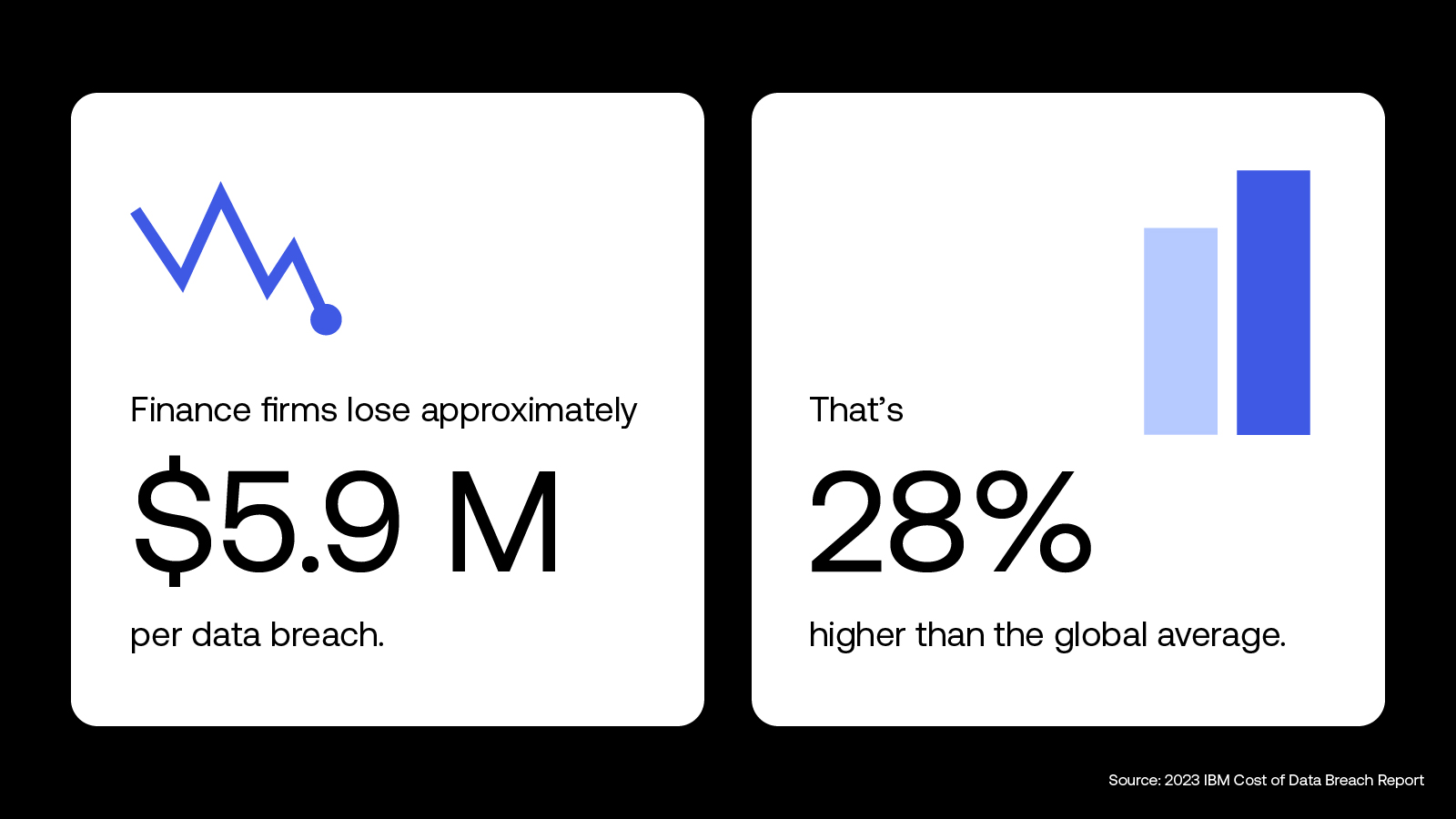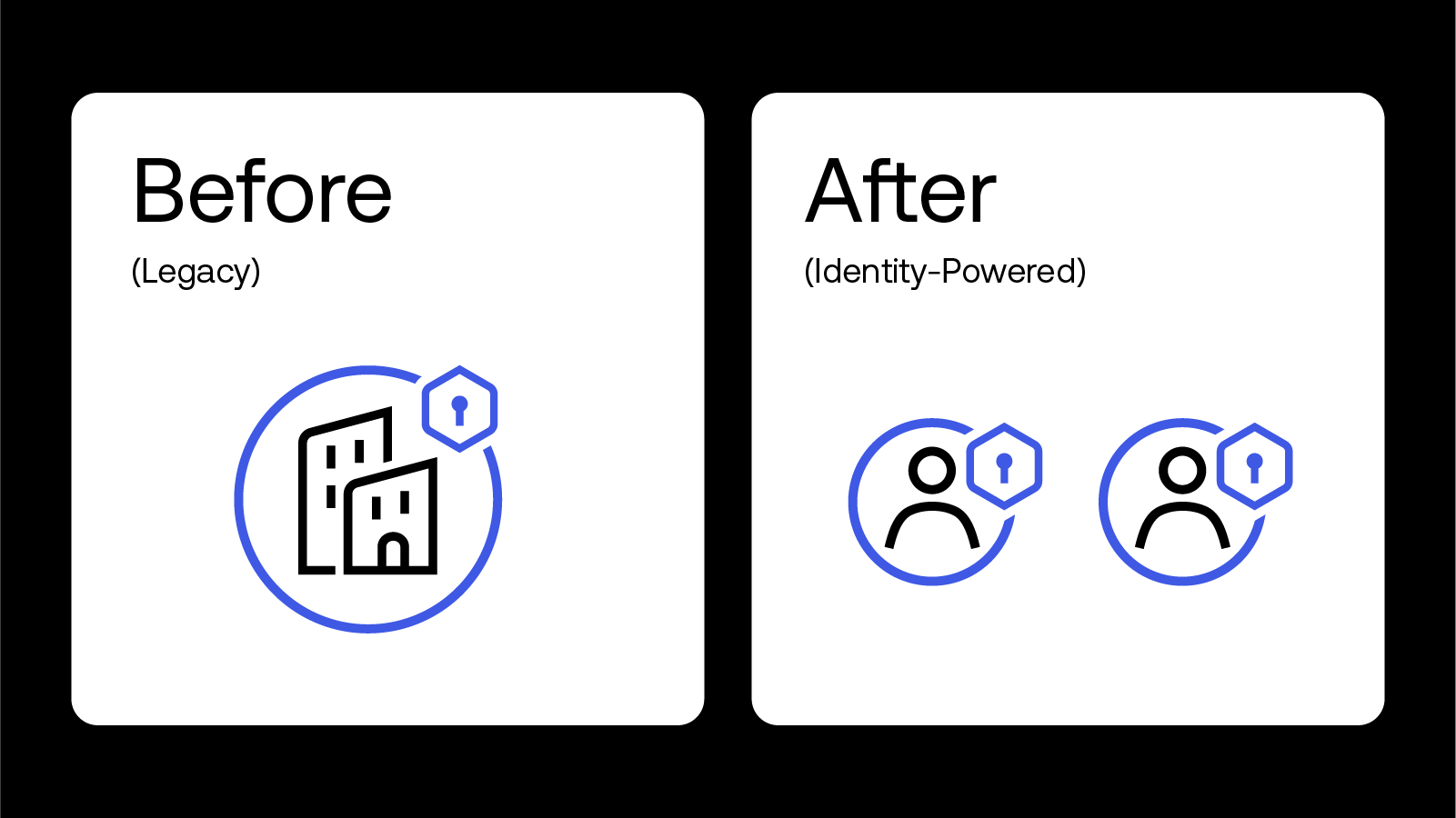Financial services providers are having serious, board-room-level conversations about what’s next for workforce security. Every type of financial services provider faces the challenge of improving workforce productivity and satisfaction while maintaining the highest level of digital security. It’s a difficult balancing act to pull off, especially considering that the threat of breaches is at an all-time high.
This isn’t a new problem, but the urgency to solve it continues to accelerate. Financial services institutions know they need a robust workforce security mechanism that mitigates the risks associated with credential theft and phishing attacks. However, legacy systems and the hybrid workforce complicate their security landscape. Deciding the “next steps” to proactively secure and enable the workforce is daunting, and this causes many organizations to behave reactively.
Identity-powered security can be the secret sauce for that next step, laying the foundation for a strong security posture, better workforce UX, and higher productivity.
This blog lays out:
- Why you need to be proactive in addressing workforce security vulnerabilities
- How your legacy or homegrown Identity and Access Management (IAM) solution is complicating your response
- How Identity-powered security can help
Breaches are getting more sophisticated — and more expensive
The threat of data breaches is not unique to the financial services industry. However, financial institutions are a uniquely attractive target of cyber criminality. A breach of a financial system holds the keys to lucrative data — PII, passwords, financial data, and account numbers.
Furthermore, brand and loyalty costs are especially steep for financial services companies: The public does not respond kindly to institutions it perceives as insufficiently protective of their money and personal information. According to a 2023 IBM Cost of Data Breach Report, finance firms lose approximately $5.9 million per data breach, which is 28% higher than the average organization. Financial services incurred the second-highest losses out of any industry in 2023 (healthcare earned the dubious honor of being No. 1).

Danger within: The full scope of workforce threats
Phishing and compromised credentials are the leading causes of this looming threat.
Phishing: Phishing is the No. 1 method criminals use to install ransomware, which links to 66% of attacks in financial services. The overall volume of phishing attacks is at an all-time high, with 36% of all data breaches stemming from phishing.
Credential Theft: In 2023, 86% of all app attacks that led to account takeover and fraud were caused by credential abuse. Passwords are the main culprit. They create a tangle of issues, and because users don’t want to keep track of them across various accounts, they are often easy to crack.
Insider Threats: Although less common, insider threats are also a top concern as they can inflict the most damage. On average, insider breaches cost 9.8% higher than the global average.
The layered impact of security breaches:
- Drained resources: The more customer data a breach compromises, the costlier the breach. Breaches involving 50 to 60 million records cost their institutions over $300 million on average.
- Damaged brand: Every breach erodes trust, even smaller ones. Once lost, this trust is immensely difficult to win back, resulting in long-term adverse effects on customer growth and loyalty.
- Worse prospects with new consumers: The resilience of financial services institutions depends on their ability to capture Millennials and Gen Z-ers. This generation of tech-savvy consumers won’t touch a digital service they perceive as insecure.
In other words, protecting against internal threats to data security needs to be a top concern for financial services institutions. Whether malicious or benign, intentional or accidental, data loss from the inside is an enormous liability hanging over every company.
Hurdles to overcome
There’s a reason phishing and credential theft persist at this scale, despite financial services institutions being well aware of the rising tide of credential theft and phishing attacks. Too many firms still rely on homegrown or fragmented security approaches that don’t stack up against sophisticated and widespread cybercrime. The workforce’s daily productivity is deeply intertwined with these solutions.
But, many leaders understandably fear that a new solution will create as many problems as it solves. Financial services companies need a security partner that enhances protections — without falling prey to common pitfalls — to achieve a truly modern level of threat protection.
|
Security can’t compromise user experience… |
…And it shouldn’t fragment core business processes. |
|
Every firm within financial services knows the value of employee retention and productivity. But antiquated security measures can introduce excessive friction into daily tasks. For example, MFA bombing (inundating workers with a steady barrage of MFA requests) drives down productivity and drives up staff-wide irritation. |
Legacy tech stacks, even those partially or completely migrated to the cloud, perpetuate business silos and create disjointed digital experiences for customers and employees. The result is a cumbersome digital experience that slows down the workforce and hinders collaboration between business units. |
|
What’s more, firms need to remain compliant in markets around the world… |
…And avoid burdening IT and security teams that are trying to do more with less. |
|
In North America, state-driven data privacy laws and federal executive orders are pushing new standards for data privacy, and similar regulatory measures are taking shape worldwide. As financial services firms continue to expand and deepen business ties with partners and customers, they must do so without running afoul of new regulatory standards. |
Understaffed IT and security teams are struggling to stay ahead of the next big threat. Legacy security systems –– especially those that produce endless support tickets –– make this already difficult job even harder, weakening security efforts in the process. |
The answer? An Identity-powered approach to security.
Identity-powered security for the future of financial services
Identity-powered security puts Identity-based controls at the center of cybersecurity infrastructure. In financial services, this approach responds to changes that are already underway (for example, the widespread adoption of cloud and multi-cloud services and the increased need for remote employee access). It enables organizations to properly implement Zero Trust (NIST SP 800-207 ZT Architecture) while prioritizing user experience, business agility, and compliance.
How, you ask?

|
Legacy security infrastructures place the security perimeter at the corporate network, leading to static and inflexible Identity and Access Management (IAM) that cannot accommodate the needs of the modern workforce. |
Identity-powered security, on the other hand, places the control and continuous monitoring of access management with the individual user, thereby allowing for continuous and context-aware controls that respond to changes in risk and trust throughout the user journey. |
This cloud-based approach to Workforce Identity supports the “least-privileged access” foundations of Zero Trust, as well as a host of core business advantages:
- Fewer breach incidents compared to legacy IAM solutions
- Lower costs concerning compliance and audit requirements
- Better user experiences that deliver security without creating excess friction
- Reduced strain on IT staff, allowing them to tackle more strategic initiatives
As the financial services landscape continues to change and the threat of breaches becomes more complex, financial services organizations need to embrace a workforce security mechanism that protects the institution from insider threats and enables a strategic, agile approach to business. Identity-powered security keeps financial services institutions on the ball, empowering proactive, modern, secure workforce management ready to adapt to a new era of work.
Get started with Okta
Okta is the leading Identity company for connecting and protecting workers. Employees, contractors, agents, and partners can use Okta to secure their devices, manage access, and maintain strong Identity governance through a unified platform solution.
- 90% faster time to detect and respond to malicious attacks (Okta Internal)
- $452k in annual security savings due to reduced risk of breaches (Insurance company)
- Achieved SOX certification with enhanced security around RBAC, ensuring granular permissions and minimizing potential breaches (Wealthsimple)
Okta Internal Estimates: Data points collected through Okta internal studies that demonstrate the potential value of using Okta's products.
Interested in learning more about Identity-powered security? Contact an Okta team member to schedule a demo.







